The Community Housing Industry Association has stated in its pre-budget submission that public housing stock has only increased by 5.2% since 2012, compared to a 15.1% increase in the population.
The Association stated that the current level of unmet housing need amounts to 640,000 households, with that figure expected to increase to one million by 2030.
It has called on the federal government to use its favourable budget position to double its investment in the Housing Australia Future Fund to $20 billion, which has recently opened for applications.
“Using a true measure of supply that takes into account population growth, the provision of social housing has effectively more than halved since the early 1990s”, CHIA chief executive Wendy Hayhurst said.
“Australia’s housing system has failed catastrophically to respond to soaring need”.
“The government’s commitment to fund 40,000 new rental homes through the HAFF and the National Housing Accord represents significant initial steps in reversing decades of national housing policy neglect.
“But commitments to date are simply not enough to meet the sheer scale of demand from Australia’s lowest income households as rental availability vanishes and costs soar”, Hayhurst said.
The following chart shows the wide gap in the number of public and private sector housing completions in Australia over the course of a year:
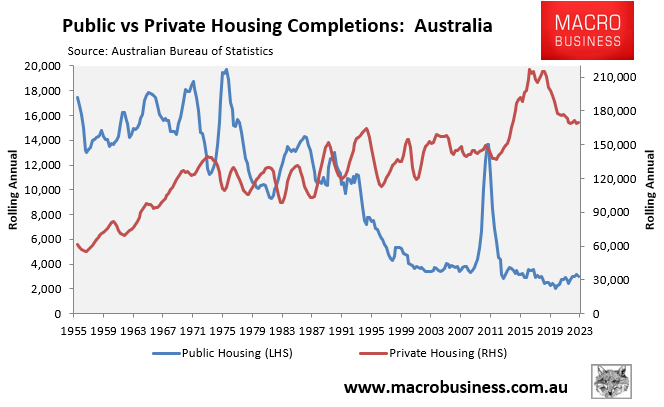
Between 1955 and 1978, Australia built an annual average of 15,400 public housing units.
From 1979 to 1990, an average of 11,700 new public housing units were built each year.
Between 1991 and 1999, the average annual production of new public housing plummeted to 8,000 units.
The number of public housing units built each year has reduced to roughly 4,000 this century.
The situation worsens when public housing building rates are compared to the overall number of newly built homes:
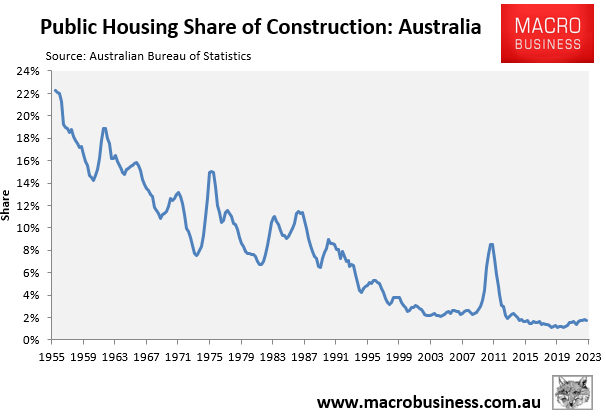
At the start of the series in 1955, public housing accounted for 22% of all housing construction. By 2022, this figure had dropped to roughly 2%.
The federal government’s policy of mass immigration has expanded Australia’s population by 8.1 million this century, yet public housing creation has decreased.
The following figure depicts the relationship between Australia’s rising population and the development of public housing:
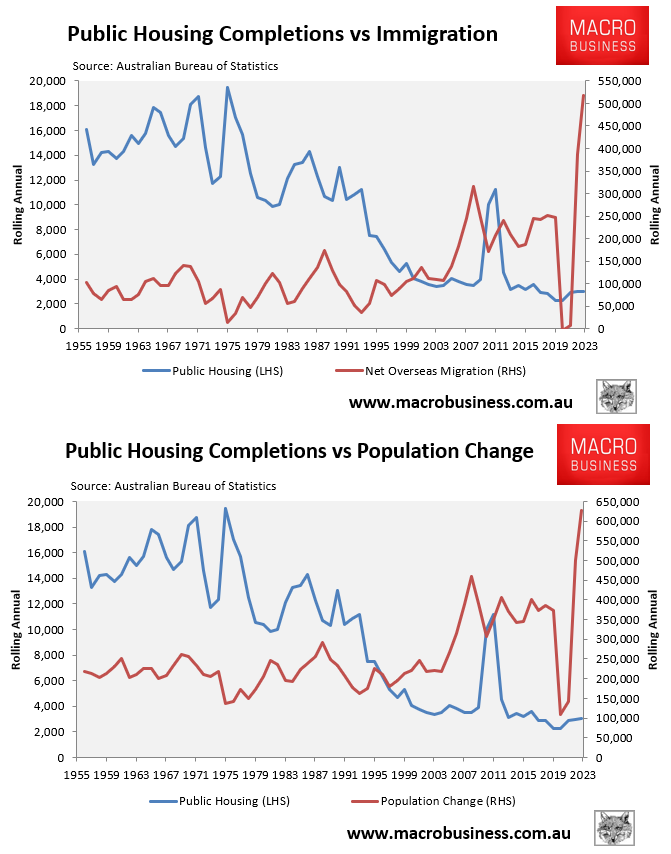
Between 1955 and 1993, approximately one public housing was built for every twelve to thirty new Australians.
In 2023, there was just one publicly built residence for every 210 new residents of Australia:
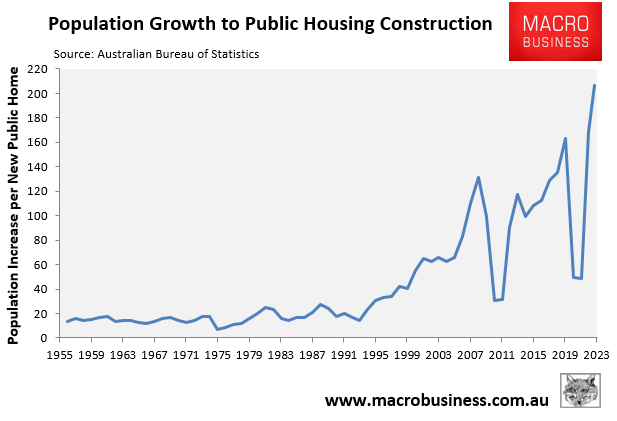
This reduction can be attributed directly to the collapse of public housing construction and the influx of unprecedented numbers of overseas migrants.
Increasing social housing is good and necessary. However, expanding the HAFF to build 80,000 social homes over five years would barely touch the sides when Australia’s net overseas migration is projected to remain permanently high:
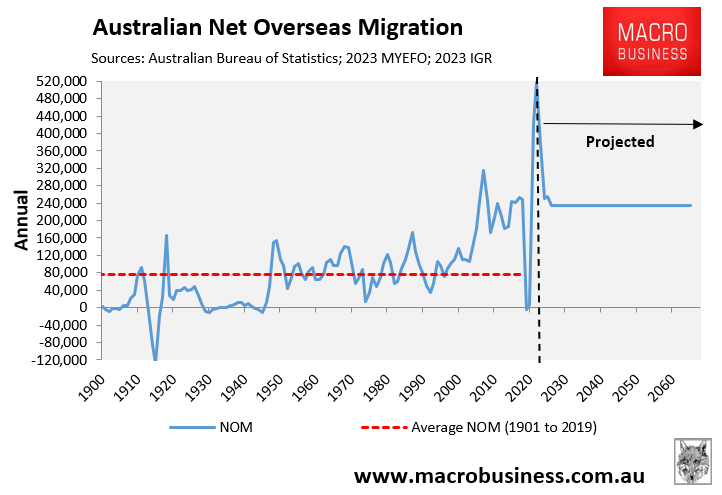
Australia’s population is officially projected to grow to 40.5 million by 2062-63, equivalent to adding another Sydney, Melbourne, Brisbane and Adelaide:
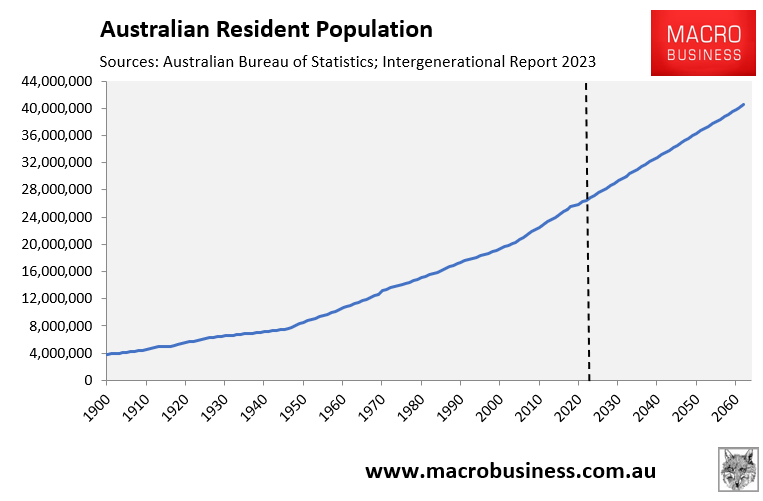
How can social housing realistically keep up with such enormous population growth? It is an impossible task.
If social housing groups were serious about resolving the housing crisis, they would urge the federal government to cut housing demand by limiting immigration to reasonable historical levels of less than 120,000 per year.

